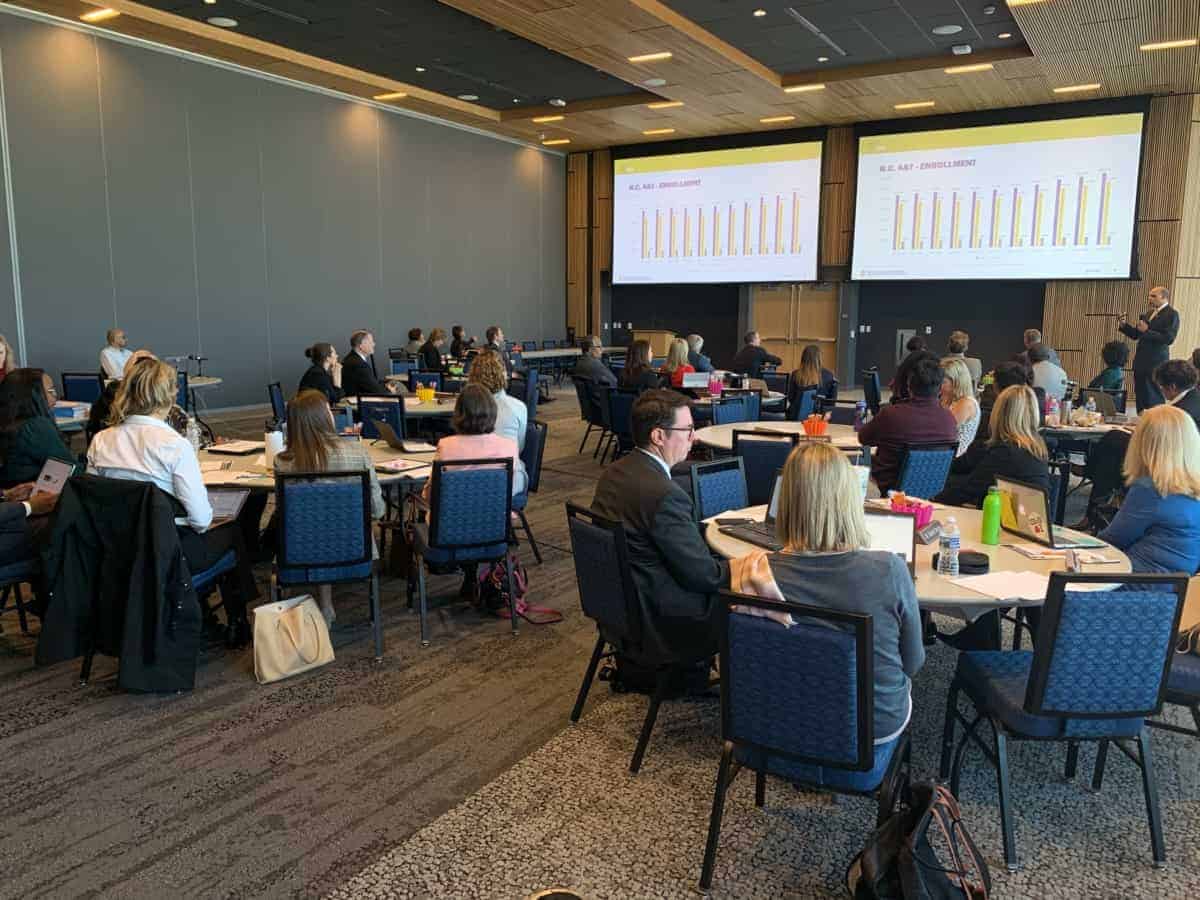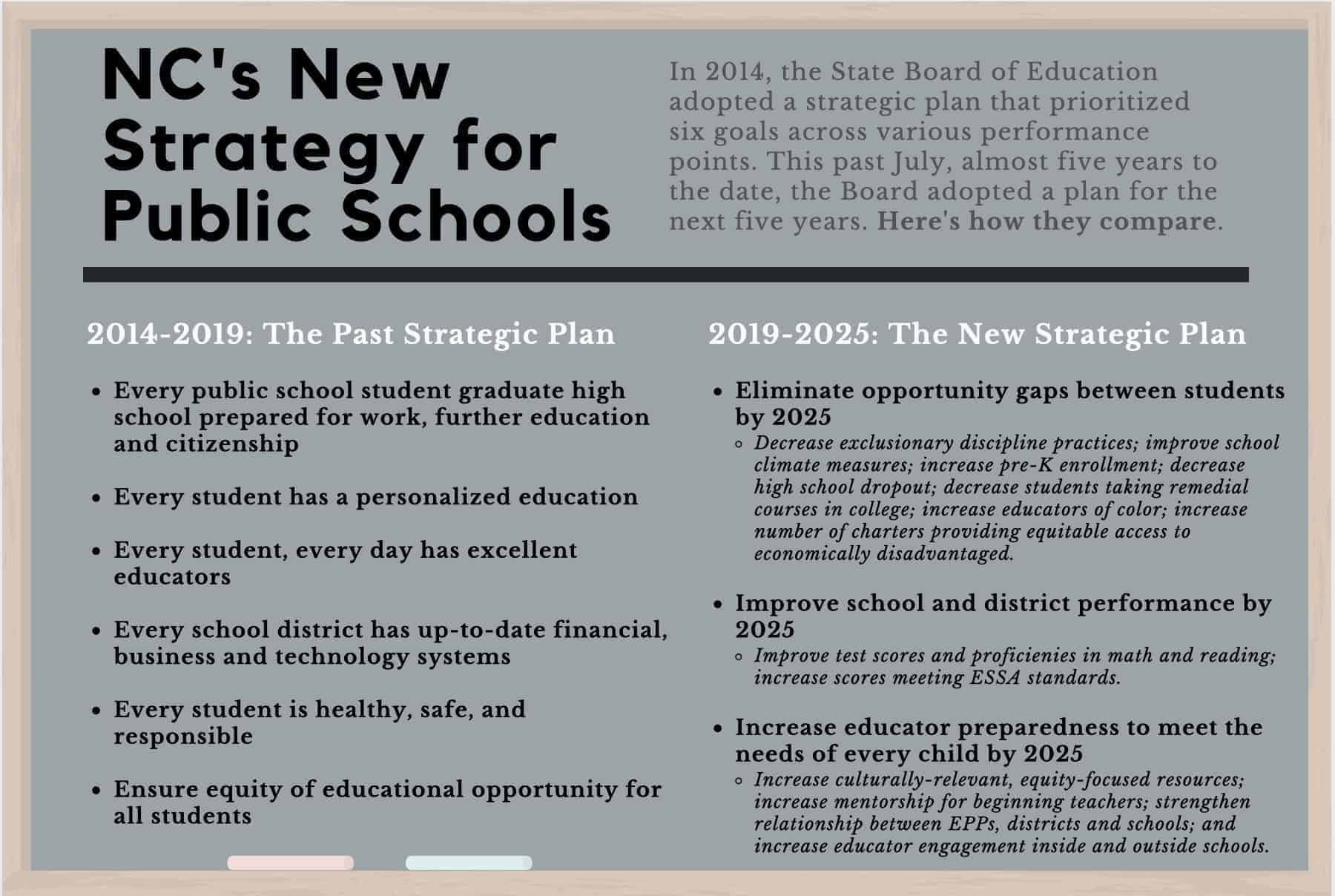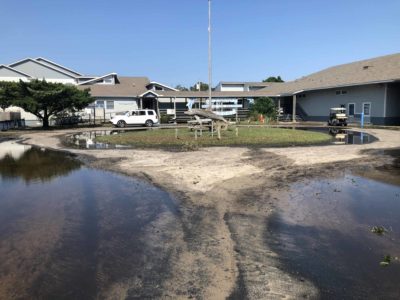

The State Board of Education gaveled in a new era Tuesday at its fall planning session, closing the chapter on the state’s 2014 five-year strategic plan and moving forward under a new action-centered plan guided by principles of equity and addressing the whole child. Gathered in the student center at North Carolina A&T State University, Board members took a moment to look back before moving forward.
“I’ll be frank and say that I feel like we’ve barely moved the needle,” Board member Amy White said. “I feel like we are constantly in the process of circling around the issues that we think to be true, that we know to be true. … We must do something different. A plan’s just a plan until we take action.”
White’s voice did not carry frustration. Instead, she joined other colleagues in issuing a challenge that meshed well with the setting and opening of these planning sessions, which began with remembrance of historical leaders who brought about change. Four of the changemakers remembered seemed to stand watch over the State Board proceedings — in the form of four student residence halls just outside.
Richmond. McNeil. McCain. Blair.
Those are the dormitories you pass on the way to the student center. They are named after the Greensboro Four. And to Board member JB Buxton, they are the perfect backdrop for this meeting.
“To see the four names of folks who put themselves on the line for this state, and this nation, and a more just future, it’s a pretty powerful testament to the kind of work that we’re called to do for our children in North Carolina,” Buxton said. “So I appreciate the setting and the way in which this campus celebrates its heroes and leaders that it’s given to our state. And I think the charge it levels at us is to be equal to that.”
The legacies of the Greensboro Four and other school reform leaders must push the Board to work harder, Buxton and others said, because the stakes are high and the task, especially in light of recent scores from the “nation’s report card,” is at least as tall.
White believes three things are needed now: acknowledgement of where education in the state was, recognizing where it is today, and focusing on where the Board wants it to be.
“And if we can get everyone on the same page about where we want to be,” White said, “then the action will be effective.”
The Board drafted and adopted its new strategic plan with guiding principles of equity and whole child, and they included a number of concrete, action-oriented objectives under each of three broad goals. The plan is a departure from the tone of the last strategic plan, which conveyed more aspiration than action.


Objectives underlying the Board’s three new goals include decreasing discipline exclusionary practices, increasing the percentage of students proficient in math by subgroup, increasing the percentage of students proficient in reading by the end of the third-grade, increasing the number of schools meeting or exceeding growth measures by subgroup, and increasing the number of charter schools meeting or exceeding academic, operational, and financial goals.
The plan also calls for preparing teachers to meet the demands of a student population that’s becoming increasingly diverse. The Board’s measures for doing this include recruiting more educators of color and increasing culturally-relevant, equity focused resources for teachers. Just over half of North Carolina’s 1.5 million students are nonwhite.
Meeting these benchmarks is important work, chair Eric Davis said. Especially with respect to the students facing the greatest challenges — including black, brown, and lower-income kids in schools.
“If current trends hold, and there are no signs that they will change, in a few years the students who historically have been the least prepared will make up the majority of our student population,” Davis said, speaking specifically about black, brown, and low-income students. “And they will also be the majority of our workforce — in business, in healthcare, in government, and in our military.”
“The NAEP scores and our own assessments clearly show that persistent student performance gaps stem in large part from gaps in opportunity and access,” Davis continued. “So it is up to us, particularly those of us in the majority with the power, to take the necessary steps to change the system. … That’s what the strategic plan for the North Carolina public school system is all about.”
What’s been done so far, Board members said, is just a plan for action. They began Tuesday’s meeting with their own call-to-action, issued by Davis.
“The goal that we must embrace is to eliminate the opportunity gaps for our students across the state,” he said, “so that our students can lift their own academic achievement and compete and win for generations to come.”
After a full day of keynote speakers Tuesday the Board will continue to hear keynotes Wednesday addressing components of the new strategic plan. Each speaker is expected to issue their call-to-action for the Board, making the speaker choices instructive of the Board’s priorities. The Board aims to use this week as a springboard to move from planning to actually doing the work.
In doing so, 2019 Teacher of the Year, Mariah Morris, asked her colleagues to always bear in mind who they are ultimately working to help.
“Something I have been grappling with [is] all of the sudden I’ve been thrust into these two different worlds where I am visiting schools with the children daily, across the state, but I’m also in the adult sphere of policy,” the second-grade teacher at West Pine Elementary said. “I charge us to think about the lens through which we see each policy and to be intentional about the lens.”


